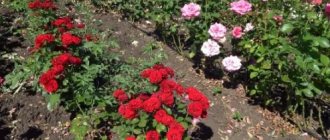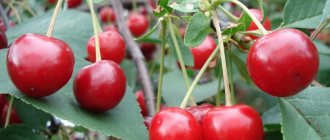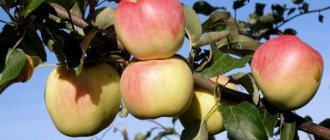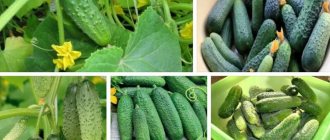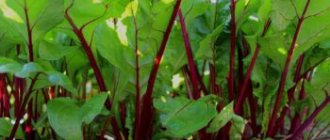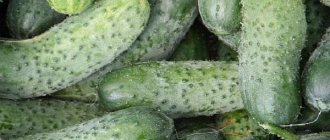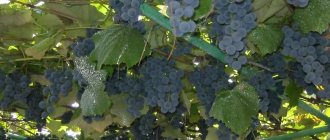How to make the right choice
To make it easier to navigate the huge variety, it is recommended to select varieties:
- zoned for your region;
- that interest you (for a greenhouse or vegetable garden);
- taking into account the purpose (for salads, pickling, universal) and ripening period;
- resistant to low temperatures, diseases and pests.
Then, according to the selected varieties, you should study information about yield, size, weight and taste, and then finally decide on your choice.
In order for cucumbers to delight you with high yields and a delicate taste, it is recommended to consider a few more tips:
- it is advisable to purchase hybrids;
- it is better to buy seed sold by domestic producers;
- You should purchase from stores where seeds are sold;
- carefully study the label, which provides information about the date of manufacture and expiration date.
What varieties are grown in the Moscow region
According to reviews, the best varieties of cucumbers for the Moscow region:
- April;
- Aquarius;
- Bush;
- Masha;
- Goosebumps.
According to ripening period
All varieties of cucumbers, depending on the ripening period, are divided into early, middle and late. It should be noted that in the northern regions you need to sow early vegetables, but for the southern regions any vegetables will do .
Early ripening
You can enjoy the taste of cucumbers already 30-40 days after germination.
Particularly popular among gardeners are:
- Altai early;
- Cupid (ultra-early);
- April;
- Pinocchio;
- Hermann;
- Zozulya;
- Cascade;
- Connie;
- Competitor;
- Courage;
- May;
- Tom Thumb;
- A summer resident's dream;
- Moscow dude;
- Muromsky 36;
- Finger;
- Moscow Nights;
- Five Stars;
- fontanel;
- Cornucopia;
- Company's secret;
- Khutorok;
- Gypsy;
- Ecole.
Mid-season
Maturity occurs in 40-55 days.
The best mid-season varieties:
- Alliance;
- Athlete;
- Babayka;
- White angel;
- Zozulya;
- Libelle;
- Nezhinsky;
- Topolek;
- Unity;
- Solar;
- Son of the regiment;
- Claudia;
- Connie;
- Competitor;
- Kuzya;
- Lohengrin;
- Picas;
- Raphael;
- fontanel;
- Svyatogor;
- Phoenix Plus;
- French size;
- Ecole.
Late ripening
They ripen in 60-80 days.
Received good recommendations:
- Aquarius;
- Hercules;
- Nezhinsky;
- Winner;
- Solar;
- Phoenix;
- Drop;
- Crunch.
It should be noted that the time it takes before ripening may vary depending on the quality of the seeds, planting location (greenhouse or open ground), soil composition, temperature, and watering.
By yield
Of course, every gardener strives to plant vegetables that would produce the maximum yield. To get 10-20 kilograms of cucumbers per square meter, it is recommended to purchase the following varieties:
- Amur;
- White Night;
- Pinocchio;
- Viva;
- Hercules;
- Summer resident;
- Dasha;
- Noble;
- Zozulya;
- Emelya;
- Chinese climbing;
- Claudia;
- Corinto;
- Sturdy;
- Bush;
- Lohengrin;
- Unwashed 40;
- Winner;
- Cellar (the most productive);
- Cornucopia;
- fontanel;
- Svyatogor;
- Solar;
- Phoenix;
- Crunch.
By method of use
Depending on the purpose of use, cucumber varieties are divided into salad varieties, intended for pickling and preservation, and universal ones.
Salad
The fruits are distinguished by their large size, beautiful appearance and sweet taste. They have thin skin and a smooth surface. If you pickle such cucumbers, they become too soft.
The best varieties for salads are:
- Bazaar;
- Bukhara;
- Hercules;
- Zozulya;
- Kochubey;
- Lohengrin;
- Martha;
- Svyatogor;
- Tamerlane.
Zozulya.
Salting
The fruits have a dense peel covered with thorns. After salting they do not lose their elasticity.
An excellent choice for salted consumption would be:
- Hermann;
- Zyatek;
- Elegant;
- Cascade;
- Kuzya;
- Libelle;
- Tom Thumb;
- Masha;
- Monastic;
- Goosebumps;
- Nezhinsky;
- Fontana.
For preservation
For canning, small-sized greens are selected that crunch when bitten.
According to reviews, it is best to roll in jars:
- Fabulous;
- Erofey;
- Elegant;
- Cascade;
- Competitor;
- Kuzya;
- Movir;
- Muromsky;
- Nezhinsky;
- Ecole.
Erofey.
Universal
Cucumbers of these varieties can be eaten fresh, pickled, or canned. But their productivity is low.
Universal varieties include:
- Stork;
- Amur;
- Babayka;
- Coastal;
- Blagovest;
- East;
- Hermann;
- Connie;
- Courage;
- Bush;
- Libelle;
- Tom Thumb;
- A summer resident's dream;
- Moravian gherkin;
- Five Stars;
- Cornucopia;
- Phoenix 640;
- French size;
- Ecole.
For open ground
The following varieties are ideal for growing cucumbers in open ground in the Moscow region:
- parthenocarpic, since bees do not fly in cool and cloudy weather;
- early;
- resistant to sudden temperature changes;
- capable of producing high yields with a lack of light and heat;
- resistant to pests and diseases.
The best cucumbers for open ground for the Moscow region:
- Stork;
- Alex;
- Altai early;
- Angelina;
- Annushka;
- Atlantis;
- Ajax;
- Fabulous;
- VIR 505;
- Vyaznikovsky;
- Snowstorm;
- Hermann;
- Darling;
- Baby Crane;
- Claudia;
- Competitor;
- Libelle;
- Masha;
- Ringtones;
- Blizzard;
- MOVIR;
- Nezhinsky;
- Opera;
- Petersburg Express;
- Cellar;
- By magic;
- fontanel;
- Santana;
- State Farm;
- Nightingale;
- Harvest 86;
- Farmer.
Choose an option for a greenhouse
To choose the best varieties of cucumbers for 2021 for growing in greenhouses for the Moscow region, you need to read reviews from gardeners on special resources. Or consult with experienced summer residents, if you have any among your friends. It is better to use early or mid-season varieties.
Early options
It is better to plant these varieties as seedlings to speed up the harvest. Seeds need to be sown 35-40 days before planting in the greenhouse so that the seedlings are strong but do not overgrow. You can plant in the soil, but it must be well warmed up. Popular options:
- Masha F1. A variant of the Dutch selection, ripening 43-45 days after germination. The fruits are small, with good taste and crispy flesh without bitterness. The ovaries are formed in bunches, flowering is female, pollination is not required. The plants are powerful, branch strongly, and therefore require shaping. The price for a package with 10 seeds is about 50 rubles.
- Tumi F1. You can harvest the first greens 38-40 days after germination; it is better to plant them as seedlings. The plants are vigorous and actively form side shoots. Flowers are female; pollination is not required. 2 fruits are tied in a knot, they grow up to 10-12 cm, the taste is good, the flesh is dense and aromatic, without bitterness. It costs 90-100 rubles per bag containing 10 seeds.
- Goosebumps F1. Fruit harvesting begins 43-46 days after germination. Plants with a female type of flowering, self-pollinating, from 4 to 6 cucumbers are formed in one node. Fruits are up to 110 mm long, weighing about 100 g with small tubercles. Can be used fresh, but this variety is especially good for pickling. High-yielding, up to 7 kg can be harvested from a plant. Price for 20 seeds is about 250 rubles.
It is better to use hybrids; they tolerate high temperatures in summer much more easily than conventional varieties. Follow the rules of care and maintain humidity, remember that plants do not like drafts, you need to open the door or window only on one side.
Medium ripening varieties
In fact, they are not much different from the early ones; the beginning of fruiting is usually delayed by only 5-7 days. But they have one advantage - the plants bear fruit longer, so the yield is higher. The following varieties can be distinguished:
- Courage F1. The first fruits are harvested approximately 50 days after the sprouts appear. The plants are spreading, form ovaries in whole bunches, and up to 20 greens can ripen on a vine at the same time. They do not require pollination and bear fruit for at least 2 months. Used fresh and for all types of preparations. 10 seeds are packaged in bags; a package costs about 70 rubles.
- Hotel F1. Harvesting can begin approximately 50 days after germination. The plants are spreading, highly branched and require shaping. Zelentsy grow up to 14 cm, but they can be removed with gherkins for pickling. They do not require pollination by insects and have complex resistance to the most common diseases. The price of a package with 10 seeds is about 80 rubles.
- Bucks F1. A new high-yielding variety, the plants are powerful, grow up to 3.5 m, shoot formation is moderate. Pollination by bees is required, so it must be grown in greenhouses that open daily. The fruits are up to 18 cm long and weigh up to 200 g. The price for a package with 20 seeds is approximately 50 rubles.
Plants can be planted either as seedlings or as seeds in the soil. You need to water frequently and feed at least once a month to reap a good harvest. You can mulch the surface to retain moisture; plants respond well to this technique. If the manufacturer recommends forming lashes, then do it as prescribed on the package.
It is better to use proven varieties for growing in the Moscow region, since the weather in the region is not the most favorable for this crop. Every year you can try one new option, test it and, if the results are good, use it in the next season.
Preparatory work
In order for cucumbers to feel comfortable and produce high yields, it is necessary to prepare a plot for them (best in the fall):
- choose a place well lit by the sun and protected from northern winds;
- dig up the soil and apply fertilizer;
- arrange a raised bed;
- Move the site to a new location every 2-3 years.
Soil preparation
To make a high bed, you need:
- According to the size of the proposed bed, dig a hole to a depth of 20-25 centimeters.
- Fence the area around the perimeter with slate or boards to a height of 20-30 centimeters.
- Fill the box with soil prepared from black soil, humus, peat and sand, taken in a ratio of 3:1:1:1. Add 1-2 kilograms of wood ash and 50-60 grams of superphosphate per square meter.
But it is better to prepare a warm bed, for which 3 layers 10-15 centimeters thick are placed in a box:
- the first layer is sunflower or corn stalks, tree branches, boards;
- second layer - shavings, wood chips, small twigs;
- third layer - leaves, hay, sawdust.
Cover the top with a layer of 5-7 centimeters of black soil. The bed is well moistened. It is advisable to add products that contain soil bacteria.
Seed preparation
Manufacturers often sell seeds already prepared for sowing. They are covered with a bright shell, which contains nutrients.
If you take untreated seeds for sowing, then they need to be prepared. First, unusable seeds should be discarded. To do this, the seed is placed in salted water (a teaspoon of salt is needed per glass of water) for half an hour. During this time, seeds unsuitable for sowing will rise to the surface, and high-quality seed will sink to the bottom.
To increase yield, you can add methylene blue (0.3 grams of powder per liter of water) when soaking. For disinfection, seed material is treated with a solution of potassium permanganate.
To speed up germination, the seeds are soaked and kept warm until they hatch.
What does self-pollinating mean?
How does the pollination process occur in self-pollinating cucumber species? It's simple - the secret lies in the special structure of the flower. The fact is that such cucumbers in one flower have both stamens and pistils, that is, both female and male organs necessary for fruiting. Such plants can be pollinated without the participation of insects and begin to bear fruit on their own.
Flower structure of self-pollinating cucumbers
The concept of “self-pollinating” is often confused with parthenocarpic, but these are completely different types of plant varieties. The fact is that parthenocarpics are species that do not need pollination at all in order to bear fruit, but in self-pollinating plants this process still occurs, albeit inside one flower. By the way, parthenocarpic species produce fruits that do not contain seeds, which is a plus on the one hand, and a minus on the other (you won’t be able to breed the variety yourself). Self-pollinating plants have seeds in their fruits.
How does pollination differ from self-pollination?
Both self-pollinating and parthenocarpic varieties are suitable for growing in greenhouse structures without unnecessary hassle - you do not have to constantly struggle with attracting winged pollinators to the greenhouse. Sometimes for this you even have to plant additional crops that will lure bumblebees and wasps inside with their aroma. Or you will have to spray the crops themselves with sweet solutions quite often.
Self-pollinating cucumber varieties
Growing seedlings
To sow seeds for seedlings, mix humus, peat, turf soil and river sand in equal proportions. For each bucket of prepared soil, add 500 grams of wood ash and 50 grams of superphosphate. You can also purchase ready-made soil at a specialized store.
It should be taken into account that cucumbers are very difficult to tolerate picking and transplanting. Therefore, it is better to sow seeds in peat pots or tablets. If seedlings are grown in plastic cups, then they are transplanted using the transshipment method.
The optimal volume of cups for seedlings is 200-250 milliliters. Small holes are made in their bottom for drainage. Sow 2-3 seeds in one cup, deepening them by 1-2 centimeters. The containers are covered with film until germination.
Seedlings must be provided with lighting for 12-14 hours daily. If there is insufficient lighting, the seedlings will stretch out and die. It is best to purchase phytolamps that emit light waves in the spectrum required by plants. But in their absence, you can use fluorescent lamps or “housekeepers”.
For irrigation, use settled water at room temperature, preferably rain or melt water. You can’t water the soil too much, but you shouldn’t let it dry out either. Typically, seedlings are watered 2 times a week. The soil is loosened periodically.
If seedlings are planted in properly prepared soil, then they do not need fertilizing.
A few days before planting in open ground, plants need to be hardened off. To do this, they are taken outside.
Sowing cucumbers according to folk signs
In the middle zone, cucumbers have been grown for a long time, with excellent harvests.
Mostly the vegetable was sown in open ground, creating warm beds. Planting in greenhouses was also practiced, but in our time, most summer residents in the Moscow region and surrounding areas have switched to greenhouses with film, glass or the popular polycarbonate. The folk calendar contains many dates associated with cucumber culture. In the old days, they knew very well when to sow cucumbers in order to get a harvest before the first cold snap. The main work took place in May, which is why the first day in the calendar, May 19, was revered by Job. It was noted that if it is warm at night, the cucumber harvest will be pleasing. The germinated seeds were sown in the beds and covered with matting for warmth.
Then they waited for the day of Isidore (Sidor the borage), which celebrated May 27. It's time to sow cucumbers, especially since on May 28th came Pakhom, who was called Bokogrem. The days of the beginning of summer were considered favorable - June 1 (John of Uglich was commemorated) and June 2 - Timothy (Falaley) borage. It was advisable to complete the main vegetable plantings during this period, since late varieties might not have time to ripen (the first frosts are not uncommon in the region in August). But for sluggish gardeners, there was one more day in the folk calendar - June 5, the commemoration of St. Leontius, after which cucumbers were no longer sown. We looked to see how many gadflies were flying these days, which signified a large harvest of greens. They said that cucumbers sown on this day are the most delicious and suitable for pickling.
Growing cucumber seedlings at home
The last “cucumber” date of the folk calendar is August 17, the famous Evdokia borage. This day ended the season, after it there was little warmth, the fruits ripened slowly and poorly. But the timing is conditional, since much depended, as in our days, on the weather.
Ancient folk signs are now just for fun, since too much has changed and, above all, the climate. Global warming has not spared the Moscow region, so mild winters with long thaws and abnormally hot summers have become common.
Landing
Planting can be done in rows or in a square-cluster method, which is more preferable. Seeds are planted in the soil to a depth of 3-5 centimeters.
With the square-nest method , holes for plants with short vines are made at a distance of 70 centimeters, and with long ones - at a distance of 90 centimeters. Place 2-3 seeds in one hole.
With the trellis method , a two-line diagram is used. Make 2 rows at a distance of 40-50 centimeters, leaving a half-meter passage between them. In a row, plants are planted at a distance of 20-40 centimeters.
If you grew seedlings, then they need to be planted in the ground at the age of 25-30 days. It is advisable to choose cloudy weather for planting. If the days are sunny, then planting work should begin in the evening. A handful of ash or humus is placed in each hole. After planting, the bushes are well watered.
Transplanting.
When to plant
There is no exact date for sowing cucumbers. The landing time is determined by weather conditions. The air should warm up to 18°C (night temperature should not fall below 8 degrees), and the soil - up to 10.
In the Moscow region, the optimal time for planting is usually no earlier than mid-April.
Sowing seeds for seedlings is carried out at the end of March. The lunar calendar 2021 will help you choose the optimal dates for sowing seeds and planting seedlings.
Features of cultivation
Cucumber is the vegetable that everyone likes. In addition to the fact that it has exceptional taste characteristics, the fruits are dietary and healthy. A cucumber cannot be unripe; the smaller it is, the more valuable it is. Cucumbers are eaten fresh, salted, or pickled. The agricultural technology for cultivating it is not particularly complicated, so cucumber can be found in every garden and summer cottage.
Cucumber is very heat-loving and moisture-loving. These factors are especially important during seed germination and first shoots. It is better if the ambient temperature is +23-+25 degrees. Low temperatures have a detrimental effect on the plant, it gets sick and grows poorly. This is observed already when the temperature drops to +10-+12 degrees. In this case, a disease such as root collar disease may occur. If it gets even colder, the plant may simply die.
Cucumbers begin to bloom quite early. This can happen as early as 30-40 days after germination. When the flower falls, if it has been pollinated, an ovary appears in its place. As a rule, the main pollinators of cucumbers are bees. In some cases, ants and other insects can pollinate a flower. There are also self-pollinating hybrid varieties of cucumbers that were bred specifically for greenhouses and film shelters.
Sometimes cucumbers can taste bitter. This is mostly due to the characteristics of the variety or improper growing conditions.
Care
It is not enough to simply plant high-yielding varieties. In order for them to fully demonstrate their properties, it is necessary to create appropriate conditions for them.
Watering
Cucumbers belong to moisture-loving crops. Therefore, the bushes need to be provided with abundant watering, the frequency of which is reduced before flowering. During this period, even slight wilting of the leaves is acceptable, which activates the formation of ovaries. Then the frequency of watering is resumed.
You can spray the bushes from above, which will increase air humidity and remove dust from the leaves. Spraying is best done in the morning. Per square meter you will need 5-10 liters of water.
Top dressing
Cucumber bushes need to be fertilized regularly, alternating mineral and organic fertilizers. Watering with mullein diluted with water in a ratio of 1:8 gives excellent results. For mineral fertilizing, take ammonium nitrate, superphosphate and potassium salt in a ratio of 3:2:1.
Solutions of baking soda (50 grams), boric acid (0.5 grams), and iodine (2 grams) have proven themselves to be good foliar fertilizers. The substances are dissolved an hour before spraying in a bucket of water.
Garter
It is best to grow high-yielding cucumbers for open ground in the Moscow region using a trellis method. In this case, the stems will weave upward along the support, which will prevent them from becoming tangled and breaking, improving lighting and ventilation, accelerating the ripening of greens, reducing the risk of diseases, making care and harvesting easier, and saving space.
To prepare the trellis, you can use several methods:
- Hammer an individual peg for each bush, which is not entirely convenient.
- Plant corn near the cucumbers, the stems of which will become a natural support for the cucumber vines.
- Purchase a special plastic mesh. In this case, poles are installed at the edge of each row, between which a mesh is stretched, along which it will be convenient for the plants to weave.
- Along the edges of the rows, pillars are fixed to which a rigid crossbar is attached. Cords are passed down from the crossbar, to which the lashes are tied.
Mesh garter.
Mulching
Mulching will help retain moisture in the soil and inhibit the growth of weeds. Peat, sawdust, and straw are used as mulch (its thickness is 6-8 centimeters).
Weeding and loosening
Watering and rain compact the soil, making it difficult for air and nutrients to reach the root system. Therefore, periodically you need to loosen the soil with a pitchfork or rake, trying not to damage the tender shoots.
When weeds appear, they are pulled out by hand.
Pinching and pinching
In order for the bushes to grow well and the number of female flowers and, consequently, ovaries to increase, the main shoot is pinched after the formation of the second leaf. Then they also pinch the side stems. You can leave one or two shoots on the bushes.
Diseases and pests
Vegetables often become infected with fungal infections, which multiply most actively at high humidity and temperature. Most often, cucumbers suffer from white rot, powdery mildew, and brown spot. To prevent infection, it is recommended to carry out preventive treatments regularly.
Cucumbers are often attacked by pests: aphids, spider mites, spider beetles, and earwigs. When they appear, the bushes are sprayed with insecticides or folk remedies.
Moscow evenings F1
This variety of cucumbers located near Moscow demonstrates good growth rates not only in its “homeland”. The hybrid is also in demand in other regions and is characterized by early ripening and shade tolerance.
| Originator and year of inclusion in the register | Selection and Seed Production LLC, Moscow region, 2000 |
| Recommended growing method | Open ground/greenhouses |
| Dates of fruiting | 42-45 day |
| The need for pollinators | No |
| Weight | 80-110 g |
| Length | 12-14 cm |
| Productivity | 15-17 kg/1 m2 |
| Application | Universal |
| Peculiarities | Strong immunity, tendency to bunching of fruits |
The plant is highly climbing, has an average number of branches and one main stem. The leaves are small in size. The hybrid has high adaptive properties and quickly adapts to various environmental conditions. For which it is valued among many gardeners.
Related article:
6 crops to plant in your garden in August
The fruits grow cylindrical, dark green in color, with pronounced tubercles on the surface. The taste is excellent. Cucumbers have only one noticeable drawback - insufficient juiciness.
Nuances of cultivation
To maintain high yields, it is recommended to update varieties every 3-5 years.
In the open ground
To attract pollinators, coriander is sown between rows or the bushes are sprayed with honey syrup. Many gardeners prefer to sow self-pollinating cucumbers for open ground.
In the greenhouse
When growing cucumbers in a greenhouse, you will need to monitor humidity and ventilate.
The daytime temperature during fruiting should be 25-30 degrees, and the night temperature should be 20-23. Humidity should be kept at 90%.
To increase humidity, containers with water are placed in the greenhouse and the bushes are sprayed. To reduce humidity and temperature, the greenhouse is ventilated.
Formation of self-pollinating cucumbers.
Parthenocarpics - varieties of cucumbers that do not require pollination
Variety "Orpheus" - small-sized fruits have a delicious taste. The variety is characterized by high yield and smooth ripening.
“Cheetah” - reviews about the variety are the most positive: it does not require pollination, and is practically not susceptible to disease. Amazing taste.
Cucumbers of the "Amur" variety - the advantages of this variety in the female type of flowering. Medium-sized cucumbers grow from numerous ovaries. A pickling variety with high taste.
Variety "Glafira" - large cucumbers grow on vines even in unfavorable conditions, the variety is especially resistant to insufficient lighting. It can be recommended for cultivation in the northern regions of Russia, as well as in Siberia.
If you plan to preserve cucumbers, choose a variety suitable for this purpose.
“Emerald” is a self-pollinating variety with female flowering. It is distinguished by high taste and smooth ripening.
Breeders have developed varieties of gherkins, the small fruits of which ripen almost simultaneously on the entire cane. Gherkins are indispensable for pickling and canning; they can be eaten raw for salads. The range of varieties has been significantly expanded; almost all gherkins are suitable for growing in polycarbonate greenhouse complexes.
Bee-pollinated varieties, which are characterized by high yields and exceptional taste, are also recommended for growing in greenhouses. Of course, it is not easy to get a rich harvest from such varieties; you need to lure bees into the greenhouse. To do this, bouquets of spicy-flavoring herbs sprinkled with syrup are placed in front of the entrance. Varieties "Nina"; "Micron"; "Tereshechka"; “Rucheek” will give an excellent harvest in greenhouses when pollinated by insects.
The choice of cucumber varieties for greenhouses is very wide; it is impossible to describe all varieties in one article. Each gardener has his own treasured varieties, which give a rich harvest every year. Testing new breeding products always attracts the opportunity to discover a new, unique variety that will generously delight you with the harvest.
